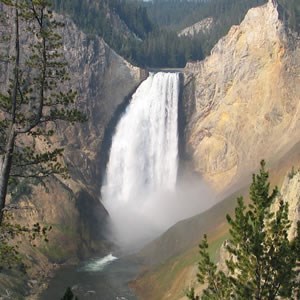
Photo by Jon Putnam.
Under the World Heritage Convention, both the United States and Canada are required to submit a country-specific periodic report and a joint regional periodic report for North America, by the end of 2004. Periodic reporting provides the World Heritage Committee with an overview of each participating nation's implementation of the World Heritage Convention and a "snapshot" of current conditions at World Heritage properties.
In 1998, the World Heritage Committee approved a periodic reporting format and process to provide up-to-date information about the application of the World Heritage Convention and the state of conservation of World Heritage Sites around the world.
The draft U.S. World Heritage Periodic Report was made available for public review for 60 days ending on November 1, 2004. The final report was transmitted to the World Heritage Commmittee. The World Heritage Committee reviewed the report at its 29th Session in Durban, South Africa in July 2005.
Each periodic report is comprised of two sections:
In Section I each country reports on the application of the World Heritage Convention. This includes: identifying properties of cultural or natural value on their territory; legal measures and efforts to protect, conserve and present cultural and national heritage;international cooperation and fund-raising; and education, information and awareness building activities.
Section II reports, in the link section, describe the state of conservation of specific World Heritage properties located in each country and updates the information that was provided to the World Heritage Committee at the time of inscription. The main objective is to assess whether the World Heritage values, for which the property was inscribed on the World Heritage List, are being maintained over time.
The National Park Service is responsible for developing the United States' country-specific periodic report and Parks Canada is responsible for developing Canada's country-specific periodic report. The United States and Canada worked together to develop the joint regional periodic report. Both countries coordinate consultations with World Heritage Site managers and information sharing with key stakeholders.
The ultimate objective is to produce concise, accurate periodic reports for both the United States and Canada, and a joint regional periodic report for North America that fully address the requirements of the World Heritage convention.
Periodic reporting provides an opportunity for the United States and Canada to raise international awareness of their World Heritage Sites and to further protect these sites of outstanding universal value.
(NOTE: Section II reports were prepared by the site manager of each World Heritage Site responding to a standard questionnaire. The reporting format offers the opportunity for site managers to indicate whether they believe there should be changes in the criteria under which the site was initially inscribed on the World Heritage List or whether the site's World Heritage boundaries should be adjusted. Responses on these topics in the Section II reports represent a preliminary judgment by the site manager only. They have not been endorsed by the U.S. government which will determine at an appropriate time whether or not to move forward with any such requests to the World Heritage Committee.)
Section II Report Links
Yellowstone National Park (263 KB Doc)
Mesa Verde National Park (263 KB Doc)
Grand Canyon National Park (273 KB Doc)
Everglades National Park (322 KB Doc)
Independence Hall (213 KB Doc)
Kluane -- Wrangell St. Elias -- Glacier Bay -- Tatshenshini-Alsek (Prepared jointly with Parks Canada) (283 KB Doc)
Redwood National Park (231 KB Doc)
Mammoth Cave National Park (285 KB Doc)
Olympic National Park (236 KB Doc)
Cahokia Mounds State Historic Site (224 KB Doc)
La Fortaleza and San Juan National Historical Site (268 KB Doc)
Great Smoky Mountains National Park (215 KB Doc)
Yosemite National Park (498 KB Doc)
Statue of Liberty (224 KB Doc)
Chaco Culture National Historical Park (296 KB Doc)
Hawaii Volcanoes National Park (226 KB Doc)
Monticello -- University of Virginia (364 KB Doc)
Pueblo de Taos (218 KB Doc)
Waterton-Glacier International Peace Park (Prepared jointly with Parks Canada) (240 KB Doc)
Carlsbad Caverns National Park (270 KB Doc)
North American Regional Report (135 KB Doc)
Parks Canada report on Canadian World Heritage Sites
Last updated: July 25, 2024
